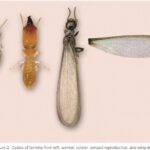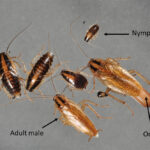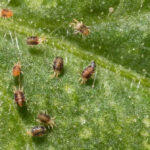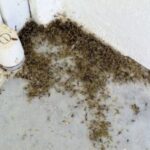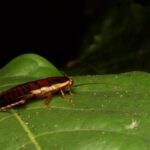Introduction:
Florida, often associated with warm beaches, swaying palm trees, and a tropical climate, experiences a unique phenomenon when temperatures take an unexpected dip – a rare occurrence that can have profound effects on the state’s diverse insect population. In this blog, we’ll delve into the intriguing world of how cold temperatures impact insects in Florida, exploring both the challenges and adaptations that these tiny creatures face.
The Unusual Cold Snap:
Florida, known for its mild winters, occasionally experiences cold snaps that bring about uncharacteristically low temperatures. These chilly interludes can have a dramatic impact on the state’s insect population, which has evolved to thrive in the typically warm and humid conditions.
- Sluggish Movement and Activity:
As temperatures drop, many insects, especially those that are cold-blooded, experience a significant slowdown in their metabolic processes. This results in decreased movement and activity levels as the insects struggle to maintain their usual energy levels in the cold. - Mortality Rates:
Cold temperatures can be lethal for certain insect species that are not adapted to withstand colder conditions. Florida’s occasional frosty nights can lead to increased mortality rates among insects, particularly those that are unable to seek shelter or find suitable microenvironments to escape the chill. - Behavioral Adaptations:
Some insects in Florida have evolved behavioral adaptations to cope with cold temperatures. They may seek refuge in sheltered areas, burrow into the ground, or aggregate in groups to conserve warmth. These adaptive behaviors are crucial for their survival during unexpected cold spells. - Impact on Agriculture:
Cold temperatures can also affect agricultural practices in Florida. Insects that play roles as pollinators or pests may be directly impacted, influencing crop yields and the delicate balance of ecosystems.
Insect Species Affected:
Florida’s insect diversity is vast, ranging from delicate butterflies to formidable beetles. Each species responds differently to cold temperatures, showcasing the intricate ways in which they have adapted to their environment.
- Butterflies:
Delicate and highly sensitive to temperature changes, butterflies may find it challenging to fly and forage in colder conditions. Prolonged exposure to cold temperatures can be detrimental to their survival, especially if they are unable to find suitable shelters. - Ants:
Ant colonies, known for their complex social structures, may face disruptions due to cold temperatures. Some ant species may retreat deeper into their nests to maintain warmth, while others may struggle to forage for food. - Mosquitoes:
While many Floridians might welcome a reprieve from mosquitoes during colder weather, certain species are adapted to survive in cooler temperatures. The impact on mosquito populations depends on the severity and duration of the cold snap.
Conclusion:
Florida’s insects, accustomed to a predominantly warm climate, navigate challenges when faced with unexpected cold temperatures. As climate patterns continue to evolve, the resilience and adaptability of these tiny creatures become increasingly crucial for their survival. Studying the effects of cold snaps on Florida’s insect population not only provides insights into the fascinating world of entomology but also underscores the interconnectedness of ecosystems and the delicate balance required for their sustained health.


